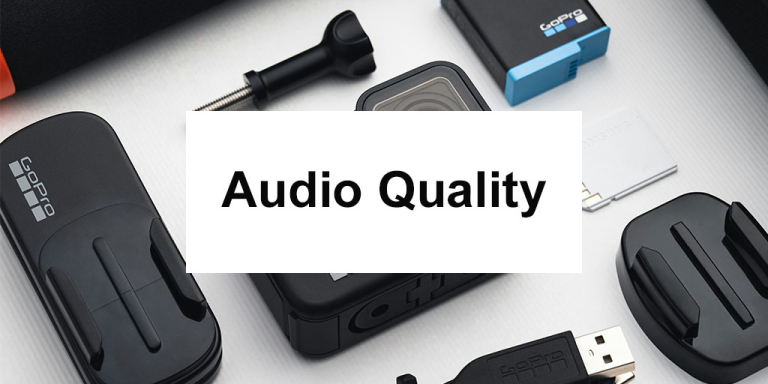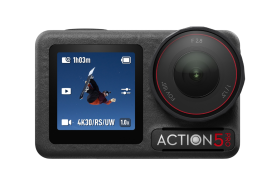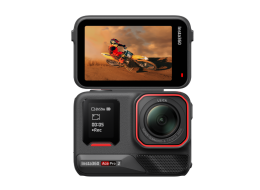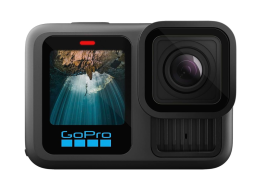Understanding Action Camera Specs: Audio Quality


While we often emphasize video specs, audio quality is crucial if you want your footage to be immersive or if you plan to narrate, vlog, or capture the sounds of your adventure. Action cameras, due to their size and waterproofing, face challenges with audio. Tiny microphones and protective housings are not a recipe for studio-quality sound. In fact, “action cameras are notorious for sub-par audio” – historically, users tolerated weak sound because the focus was on visuals. However, recent models have improved their microphones and processing, and there are ways to get good audio with action cams.
Built-in Microphones
Most action cams have 2 or 3 built-in mics. For example, the GoPro Hero series and DJI Action have 3 mics (typically front, top, and side). Multiple mics allow the camera to do some smart noise reduction – for instance, identifying wind noise and subtracting it, or choosing the best mic for a given situation (front mic for when you’re talking to the camera, etc.). The camera can also record stereo sound or even matrixed surround in some cases.
The quality of these tiny mics has improved – they can capture decent clarity for voices nearby and the roar of waterfalls or engines. But physics is physics: small mic diaphragms are less sensitive to low frequencies, and waterproof membranes (needed to seal the camera) further muffle sound, especially bass.
Wind Noise
The biggest enemy for action cam audio is wind. When you pick up speed (bike, ski, even running), wind hitting the mic creates a loud rumble or whoosh that can drown everything else out. Manufacturers address this in two ways:
- Electronic wind noise reduction, where the camera’s firmware filters out low-frequency noise and/or chooses the mic that is least affected at a given moment. GoPros have a setting for Wind Reduction (On, Off, Auto). In Auto, it will switch between “Wind” and “Stereo” modes. Wind mode aggressively filters noise but might make audio mono or less rich; Stereo mode keeps full range for best quality when wind isn’t an issue. The camera can automatically toggle when it detects wind. For instance, if you mount a GoPro on a moving car, it will likely engage Wind mode to cut the rumble. Users have noted that these features are helpful but not infallible – strong wind can still overwhelm.
- Physical wind mufflers: Some cameras or accessories include foam covers (like little windscreens or “dead cats”) that you can put over the mic holes. GoPro’s Media Mod has a foam mic cover that claims to suppress wind up to 20 mph. Even a DIY solution like a bit of furry fabric taped over the mic can dramatically cut wind noise (many riders do this).
Microphone Placement
Built-in mics capture general sound well, but if you want specific audio (like your voice clearly while you’re narrating on a bike), placement matters. If the camera is on your helmet, your voice may sound distant and wind might dominate. Chest mount gets you a bit more body shielding the mic. Some mods (like the Media Mod for GoPro) include a directional mic that faces forward, focusing on subjects in front of the camera. This can help pick up your voice if you’re in front or behind the camera speaking.
Despite improvements, for professional or important audio, external solutions are often used. That could mean an external microphone or a separate audio recorder. Many action cams can accept external mics via an adapter or mod. For example, GoPro offers a USB-C to 3.5mm mic adapter (or the Media Mod which has a 3.5mm jack) to let you plug in a lavalier mic or a shotgun mic.
Using an external mic can be game-changing: you could use a high-quality lapel mic inside your helmet for motovlogging, or a shotgun mic on a stick for commentary, yielding audio that rivals larger cameras. However, it’s another thing to carry and manage, and you might lose waterproofing when an adapter door is open.
Frame Rate/Shutter in Low Light
As a technique, many cams will automatically drop to lower frame rates in very dark scenes (e.g., from 60fps to 30fps or even 24fps) because a slower frame rate allows a longer shutter time per frame (thus gathering more light). For instance, GoPro has an “Auto Low Light” setting that does this when needed. If you see stuttery video at night, it could be the camera using a slower shutter (like 1/30th sec instead of 1/120th) to brighten the exposure.
This introduces motion blur, but sometimes that’s the only way to get a visible image without insane ISO. Be aware: if image stabilization is on, many cams will try to keep shutter speed high (to avoid motion blur that stabilization can’t fix), which can force ISO up and produce noise. In such cases, turning off EIS at night can let the shutter slow down and get a cleaner (but possibly blurrier) image.
Audio Quality Metrics
Camera spec sheets rarely list quantitative audio specs (like frequency response or bitrate of audio), but typically action cams record audio in AAC format at around 48 kHz, which is decent. The quality tends to be limited by the mic hardware and wind handling rather than the encoding. Some cameras have a stereo vs wind reduction setting as mentioned; others might have an auto gain control which levels out volume (useful when sounds go from quiet to loud, but sometimes can introduce pumping effects).
Reviews and user feedback are the best way to judge audio quality. For instance, users noted the Hero11’s mics were a noticeable step up from early GoPros – clearer voice and better wind filtering. Still, it’s acknowledged that even the best built-in audio is okay but not amazing.
T3’s review of the GoPro Media Mod noted that with the mod (directional mic), voice was captured with “greater clarity... from longer distance” and wind noise was reduced with the foam cover. In other words, the stock camera did fine, but the accessory made it “a considerable improvement” (approaching the quality of a dedicated external mic).
Typical vs. High-End Example
A basic action cam from a lesser-known brand might have a single mic and no special wind filtering – resulting in mono audio that can be overwhelmed by noise or sound tinny. A high-end action cam like GoPro Hero11 has multiple mics and advanced processing, giving surprisingly good stereo sound in many conditions. You can hear some stereo separation and the overall tone is clearer. High-end accessories: GoPro’s Media Mod or DJI’s External Mic adapter allow further upgrade.
It’s worth mentioning some 360 cams or modular cams (Insta360, etc.) even support Bluetooth microphones (like using AirPods or Insta’s wireless mic) to get audio from a separate source, which is another clever solution.
Conclusion
In summary, look for multiple mics (most have 2-3 now), mention of wind noise reduction, and availability of external mic support. These indicate a more robust audio setup. Plan accordingly for your use – you might budget for a mic adapter or a separate recorder if high-quality audio is a must.
And always test: do a trial recording in the scenario you plan (e.g., cycling fast) and listen back. That’s the best way to understand your camera’s audio limits and how to work around them. Improving audio can dramatically elevate the overall production value of your action videos, so it’s worth paying some attention to, even though it’s not as flashy as 4K vs 5K debate.
Check out final part of the series where we discuss build quality, battery, and mounting.
Missed part six? Then go back and learn what are Aperture, ISO, and Noise?
Featured image by Sanju Pandita.
The Best Low-Light Shooting Action Cameras
FAQ
What should I look for in an action camera's audio specs?
Look for cameras with multiple microphones (typically 2–3), wind noise reduction, and external mic support. These features usually indicate better built-in audio quality.
Is an external mic necessary?
If high-quality audio is important for your project, consider budgeting for an external mic or a mic adapter. Built-in audio might not be enough in challenging environments.
How can I test my camera's audio performance?
Do a trial recording in the actual scenario you plan to shoot (e.g., biking, skiing). Listen to the playback to understand how the camera handles wind, background noise, and clarity.
Why does audio matter for action videos?
Good audio can significantly enhance the overall production quality. While resolution often gets more attention, clear sound makes a big difference in viewer experience.
What are the action cameras with the best audio quality settings?
Action cameras with the best audio quality are DJI Osmo Action 5 Pro bacause it features three built-in microphones with advanced wind noise reduction, Insta360 Ace Pro with a built-in windscreen and solid onboard audio capture, and GoPro Hero 13 Black which offers RAW audio capture for better editing flexibility.



